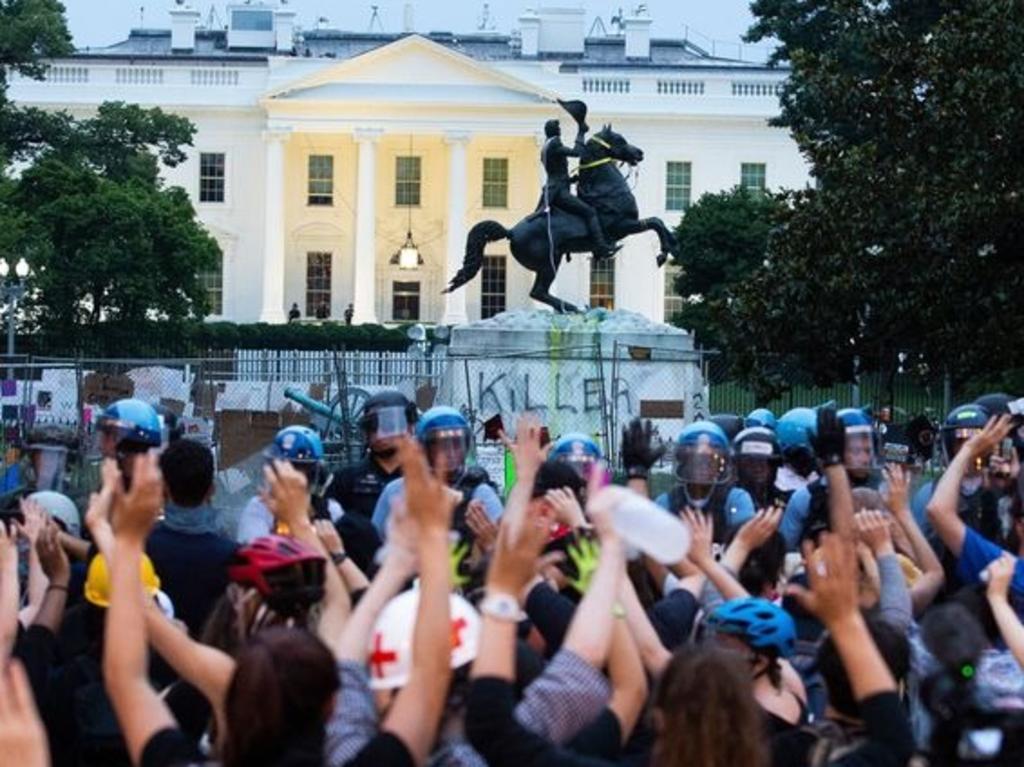
The times could not have been darker. The previous day, the North Korean army had stormed into South Korea, whose capital, Seoul, fell as the conference ended. Amidst a Berlin still in ruins, and whose every feature conjured up memories of the Holocaust, a third world war, wreaking unimaginable destruction, seemed inevitable.
Meanwhile, sustained by a far-reaching propaganda campaign, the Soviet Union was consolidating its ascendancy in the battle of ideas, as some intellectuals in the West succumbed to its siren call while others sheltered in a neutralism that amounted to capitulation.
The CCF’s purpose was simple: to not give up the fight. Knowing that culture could not survive without political freedom, and that political freedom could not survive without a vibrant culture, its founders aimed to highlight the Soviet empire’s suppression of intellectual creativity and to celebrate the incessant dynamism of the Western tradition.
To anyone who grew up reading its magazines, which included Encounter in Britain and Quadrant in Australia, the CCF’s achievement was breathtaking.
Jostling on the pages of Encounter’s first issue were Albert Camus and Christopher Isherwood, while the next issue brought WH Auden, Arthur Koestler and Golo Mann, alongside unpublished pieces by Virginia Woolf and WB Yeats. Month after month, meticulously crafted essays tackled the burning issues of the day from an eclectic, but always liberal, point of view.

That would hardly have been possible without substantial funding. By far its largest source was the CIA which, until its role was exposed in 1966, channelled its support through an obscure American foundation.
In his brilliant history of the CCF, The Liberal Conspiracy (1989), Peter Coleman, who edited Quadrant from 1967 to 1987, argued that the CIA didn’t interfere in the CCF’s publications. Since then, archival research has confirmed Coleman’s contention.
But the CIA influenced their broad direction. In particular, the agency insisted the CCF’s publications be as welcoming to the non-communist left as they were to the non-authoritarian right.
In fact, if American support was provided covertly by the CIA, rather than by the State Department, it was partly because the CCF’s openness to both sides of politics exposed it, at the height of McCarthyism, to congressional attack.
The CIA’s approach was to some extent pragmatic: the non-communist left was enormously influential, particularly in Europe, and to exclude it would have dramatically undermined the CCF’s effectiveness.
But to Tom Braden, the war hero who oversaw the project at the CIA, the rationale was simpler. “In much of Europe in the 1950s,” he later recalled, “socialist people who called themselves ‘left’ were the only people who gave a damn about fighting communism.”
It wasn’t difficult to understand why. As Stalin’s puppets tightened their grip on Eastern Europe, the social democrats, whom the communists considered their fiercest rivals, were among the first to swing from the lampposts.

However, the Soviet menace did not only make it possible to form a broad-ranging coalition; it also provided a daily reminder of what the loss of cultural freedom entailed.
Of the 700 writers had attended the First Congress of the Union of Soviet Writers in 1934, barely 50 survived the Stalin years. In the Soviet Union alone, 2000 poets, novelists and essayists were dispatched to the gulag, where 1500 — including extraordinary writers such as Isaac Babel, Osip Mandelshtam and Der Nister — met their deaths.
The anti-Stalinist left therefore provided some of the CCF’s strongest supporters, with several of its iconic intellectual figures — among them Theodor Adorno and Max Horkheimer, the founders of critical theory — engaging, rigorously and respectfully, with their conservative counterparts.
The culture of intellectual freedom was, in other words, also and above all a culture of civility and of reasoned argument.
That world has, of course, vanished. Although a few of its journals, including Quadrant, survived the loss of the CIA’s financial support, the CCF, which in 1967 became the International Association for Cultural Freedom, struggled before being dissolved in 1979. Nothing arose to fill the vacuum: with the Cold War drawing to a close, so too, it seemed, had the need to defend cultural freedom. Except it hadn’t.
Years eralier, Julien Benda, among the acutest of cultural critics, warned that whenever the foundations of Western culture collapsed, it was because of attack from within: the deadliest sappers tunnelled from inside the city.
Equally, Adorno, as he grappled with the student protests of the 1960s, reasserted his fear that a new, especially vicious, form of “neo-stupidity” was emerging, based on a cohort he described as “half-educated”.
They were just educated enough to believe they could take their “limited knowledge as truth”; but, lacking political maturity and consumed by rage, they were drawn to analyses that were “at once feeble-minded and sinister, now to justify the disaster which has happened, now to predict the catastrophe still to come”.

Finally, recalling those whom Georges Sorel had called “the bullies of university socialism”, Edward Shils, the distinguished social theorist who played a leading role in the CCF, reflected in 1995 that while the Soviet collapse had removed one of “the most monstrous of tyrannical efforts to destroy human civilisation”, “the traditions of antinomianism, of hatred for civil society, and of superficial progressivism are not yet finished — nor will they ever be”.
As statues tumble, films are withdrawn and books black-listed, those warnings cannot but resonate.
Everywhere, speaking has been replaced by shouting; yet when everyone shouts, no one listens.
As if that were not bad enough, the worst tropes of the Stalinist attitude to culture have resurfaced: the caricaturing of history as a Manichean struggle between good and evil; the refusal to admit complexity; the belief that rather than being understood, the past should, in the literally translated words of The Internationale, be erased — all these were integral to the mindset that “cancelled” Pasternak, Tsvetaeva and Akhmatova.
And with that mindset deeply entrenched in the universities, the government’s latest package is unlikely to prevent it from being implanted in cohort after cohort of tertiary students.
Perhaps it is fortunate that the courageous men and women who made the CCF are all gone; the deaths, only a few months ago, of our own Coleman and then of the incomparable George Steiner brought that era to a close.
But in remembering them, we should also remember that they showed what can be achieved by standing up to the thugs. Seventy years on, when the thugs reach for their guns, we should, once again, reach for our culture.








Seventy years ago today, the Congress for Cultural Freedom was born at a conference in Berlin that brought together intellectuals from across the non-communist world.